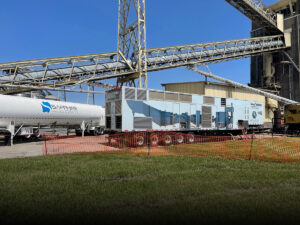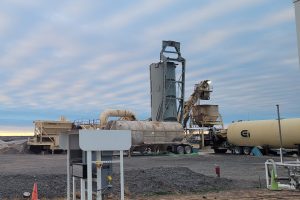To keep your business running smoothly, you need fuel to power your commercial fleet. While many businesses use gasoline or diesel fuels to power their vehicles, you can invest in more available and affordable fuel alternatives. Natural gas is an excellent example of an affordable, available, and environmentally-friendly fuel.
Natural gas fuel comes in one of two states: compressed natural gas (CNG) and liquefied natural gas (LNG). You can use either of the two for your commercial fleet. But since each of them has distinct qualities, you should choose an option that will work best for you. In the contest of CNG vs LNG fuel, which is the better choice? Let’s find out.
[bctt tweet=”Natural gas can be compressed natural gas (CNG) or liquefied natural gas (LNG). Learn the applications and differences between CNG vs. LNG here. #SapphireNatGas #SapphireGasSolutions” via=”no”]

Compressed Natural Gas & How to Use It
As the name suggests, compressed natural gas is processed by compressing the gas to less than one percent of its volume at standard atmospheric pressure. The now highly concentrated fuel retains its gaseous state while in storage. Vehicles that rely on CNG use spark-ignited internal combustion engines. While CNG can’t provide as much energy as its liquid counterpart, it works remarkably well as fuel for light to medium-duty vehicles and even for certain heavy-duty models.
Liquefied Natural Gas & How to Use It
LNG is the liquid form of natural gas. It’s produced by first purifying the gas and super-cooling it to -260°F to transform the gas to its liquid state. The liquid is then stored in cryogenic tanks to maintain its low temperature and liquid form. LNG’s density is higher than CNG’s, so the liquid fuel can provide more power than the same amount of gas. This makes LNG an excellent choice for vehicles that regularly drive long distances and need a more efficient option.
How to Choose
Both compressed and liquefied natural gas have numerous advantages over traditional fuels like diesel. But when selecting between CNG vs. LNG, you should consider your fleet’s needs. Here are the factors to consider when choosing between the two options.
- Type of Vehicle: You can choose either the CNG or LNG depending on your company’s types of vehicles. Delivery trucks, school buses, and other short-range vehicles are likely designed to use CNG. On the other hand, long-range vehicles like marine equipment and heavy-duty mining machinery tend to rely on LNG.
- Driving Range: Both CNG and LNG are ideal for short-distance drives between refueling stations. However, CNG usually costs less than LNG, which can help you save more in the long term.
- Fueling System: Handling LNG is an involved process requiring special fueling equipment, safety clothing, and extensive training, all of which jack up your budget. On the other hand, while CNG doesn’t require special equipment or training, it’s not compatible with every vehicle you may have. Consider both your budget and your fleet’s needs before making a decision.
Finding the Best Fuel for Your Workplace
Neither CNG nor LNG is inherently the better choice. However, your particular fleet and your budgetary restrictions will significantly influence your final decision. Know your needs and limitations before you choose.
Contact us to learn more about CNG and LNG.




